Home>diy>Home Improvement>How To Save Money On A Bathroom Renovation
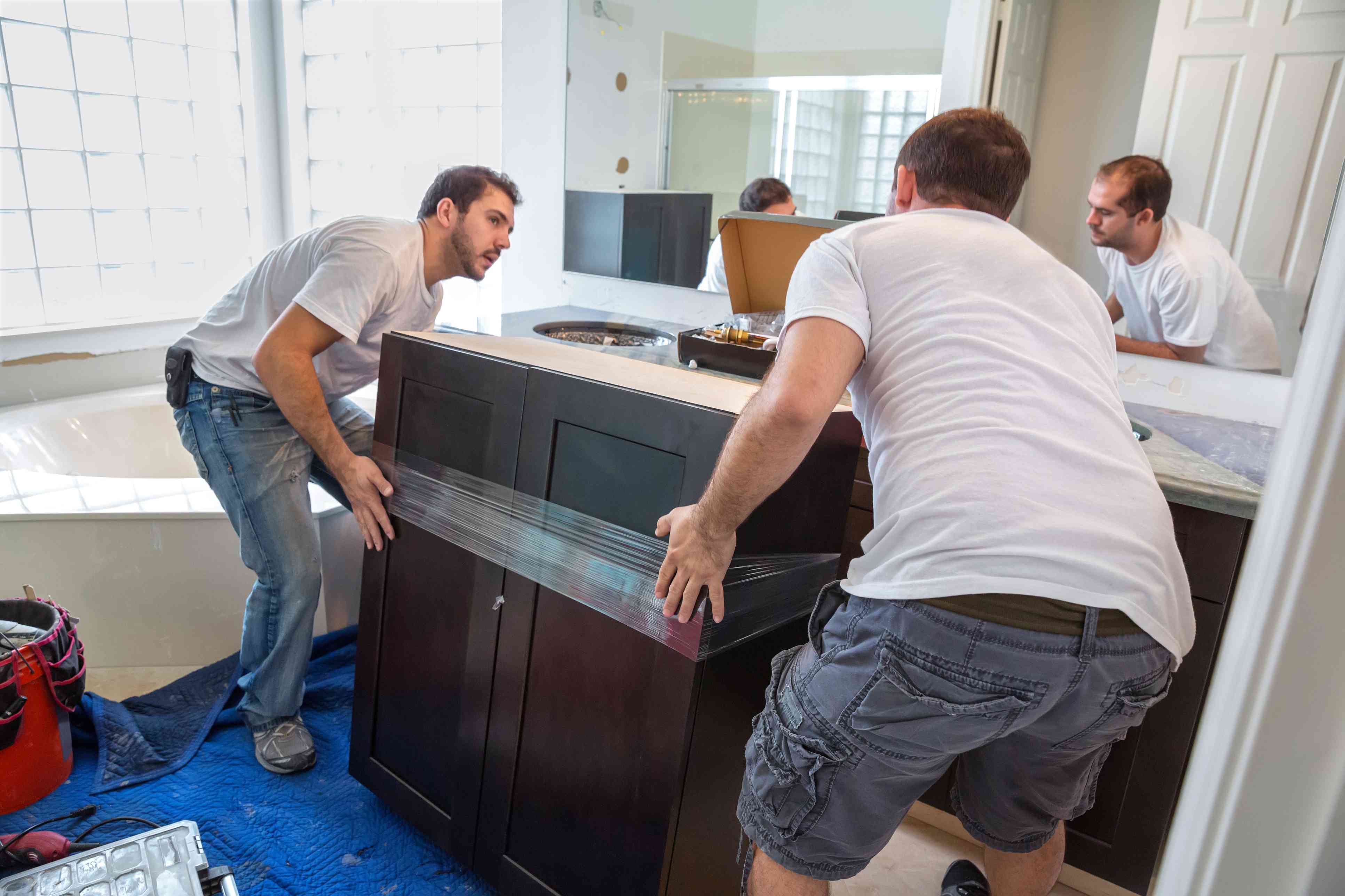

Home Improvement
How To Save Money On A Bathroom Renovation
Modified: October 22, 2024
Discover the best tips and tricks to save money on your bathroom renovation project. Get expert advice on home improvement and transform your bathroom without breaking the bank.
(Many of the links in this article redirect to a specific reviewed product. Your purchase of these products through affiliate links helps to generate commission for Storables.com, at no extra cost. Learn more)
Introduction
Welcome to our comprehensive guide on how to save money on a bathroom renovation. As homeowners, we understand that remodeling can be a significant investment, but it doesn’t have to break the bank. With the right planning, prioritization, and cost-saving strategies, you can give your bathroom a fresh and stylish makeover while staying within your budget.
Assessing your bathroom’s current condition is the first step in your renovation journey. Take a close look at the fixtures, flooring, plumbing, and overall layout to identify areas that require improvement. This assessment will help you determine the scope of work needed and create a realistic budget.
Once you have a clear understanding of your bathroom’s needs, it’s time to plan your budget. Setting a budget will guide your decision-making process and ensure you stay within your financial limits. Consider factors such as the cost of materials, labor, permits, and any additional services required to complete the renovation.
Setting priorities for your renovation is crucial when working with a limited budget. Decide which aspects of your bathroom are most important to you and allocate your funds accordingly. Instead of trying to tackle everything at once, focus on the areas that need the most attention and leave less critical tasks for future updates.
One of the main considerations when renovating a bathroom is whether to hire professionals or take a DIY approach. While DIY can save money, it’s important to be realistic about your skills and the complexity of the project. Complex plumbing, electrical work, or major structural changes are best left to professionals to ensure safety and compliance with building codes.
Another way to save money is by shopping smart for your renovation materials. Look for sales, discounts, and clearance items to get the best deals. Consider open-box or gently used fixtures or even check out salvage yards for unique and affordable pieces. Online marketplaces and auction sites can also be great sources for discounted items.
As you embark on your bathroom renovation, think about reusing and repurposing items wherever possible. For example, you can refinish and paint existing cabinetry to give it a fresh look instead of investing in brand-new ones. Similarly, repurposing old furniture or accessories can add character and uniqueness to your bathroom design.
When selecting fixtures, opt for cost-effective options that meet your needs without breaking the bank. Look for water-efficient toilets, faucets, and showerheads that can help you save on utility bills in the long run. Additionally, consider buying in bulk or purchasing a suite of fixtures from the same manufacturer to negotiate a better deal.
Key Takeaways:
- Prioritize your renovation needs, set a realistic budget, and consider DIY options to save money on a bathroom renovation. Optimize spending on materials and focus on cost-effective fixtures for a stylish and budget-friendly transformation.
- Maximize storage with creative solutions, utilize affordable decor options, and employ cost-saving painting techniques to achieve a stylish bathroom on a budget. From reusing materials to strategic planning, create a beautiful and cost-effective space.
Read more: How To Save Money On Home Renovation
Assessing Your Bathroom
Before embarking on a bathroom renovation, it’s crucial to assess the current state of your bathroom. This assessment will help you identify areas that require improvement, determine the scope of work needed, and create an accurate budget.
Start by examining each element of your bathroom, including fixtures, flooring, plumbing, and the overall layout. Look for signs of wear and tear, such as leaky faucets, cracked tiles, or outdated design. Take measurements and note any structural or functional issues that need to be addressed.
Consider the functionality and flow of your bathroom. Is the layout efficient? Are there any design flaws that could be improved upon? Think about how you use the space and identify any pain points that need to be resolved. This could include inadequate storage, insufficient lighting, or lack of ventilation.
Assess the condition of your fixtures, such as the bathtub, shower, toilet, and sink. Determine whether they can be salvaged or if they need to be replaced. Look for signs of rust, staining, or malfunctioning components. Keep in mind that updating fixtures can drastically enhance the look and functionality of your bathroom.
Take a close look at the flooring in your bathroom. If you have tiles, check for cracks or loose grout. Consider the durability and aesthetic appeal of the current flooring. Depending on your budget, you may choose to replace the flooring altogether or explore more affordable options like refinishing or using vinyl or laminate alternatives.
Don’t forget to assess the condition of your plumbing. Look for leaks, water damage, or any signs of corrosion. Ensure that the plumbing fixtures are in good working order and that there are no issues with water pressure or drainage.
During this assessment, it’s essential to keep in mind your desired outcome for the renovation. Consider your personal preferences, lifestyle, and future needs when evaluating your bathroom’s current state. This will help you prioritize the areas that require immediate attention and make informed decisions during the renovation process.
Furthermore, involve a professional if you are uncertain about any structural or technical matters. They can provide valuable insights and ensure that your renovation plans align with building codes and safety guidelines.
By thoroughly assessing your bathroom at the beginning of your renovation journey, you’ll have a clear understanding of what needs to be done and can plan your budget and the project timeline accordingly. This groundwork will set you up for a successful and cost-effective bathroom transformation.
Planning Your Budget
Planning your budget is a crucial step in any bathroom renovation. By setting a budget upfront, you can ensure that you have a clear understanding of your financial limits and make informed decisions throughout the project.
Start by determining how much you’re willing to spend on your bathroom renovation. Consider your overall financial situation and the extent of the changes you want to make. It’s important to be realistic about the funds you have available and what you can afford.
Once you have a budget in mind, allocate funds to different aspects of the renovation. Break down the costs into categories such as materials, labor, permits, and any additional services you may need, such as plumbing or electrical work. This will allow you to better track your spending and identify areas where you can potentially save.
Research the average costs of materials and labor in your area to get an idea of what you can expect to spend. Keep in mind that prices can vary depending on the quality of materials and the complexity of the renovation. It’s always a good idea to budget a little extra for unexpected expenses that may arise during the process.
Consider whether you’ll be financing the renovation or paying for it out of pocket. If you’re planning to take out a loan or use credit, factor in the interest rates and monthly payments when determining your budget. It’s essential to have a clear understanding of the financial impact of your renovation and to ensure that you can comfortably manage the payments.
In addition to the actual renovation costs, also include any additional expenses that may arise, such as temporary accommodations if your bathroom will be out of commission or eating out more frequently if you won’t have access to a kitchen during the renovation.
Keep in mind that the budget may not only be limited to the renovation itself. You may also want to incorporate future maintenance costs or updates, especially if you’re planning to stay in your home for a long time. This could include setting aside funds for regular plumbing or electrical inspections or planning for future aesthetic updates.
Lastly, be prepared to make trade-offs and adjust your budget accordingly. Prioritize the essential elements that you want to focus on and be open to compromising on other aspects. By being flexible and adaptable, you can create a budget that works for you while still achieving your desired outcome for your bathroom renovation.
Remember, planning your budget is not just about determining how much you can spend. It’s also about being mindful of costs and finding ways to make smart and cost-effective choices throughout the renovation process.
Setting Priorities for Renovation
When working with a limited budget, setting priorities for your bathroom renovation is crucial. It allows you to focus your resources on the aspects that matter the most to you and make the most significant impact on the overall look and functionality of your bathroom.
Start by making a list of the features or elements in your bathroom that you want to improve or change. Consider both aesthetic and functional aspects. This could include items like the bathtub, shower, vanity, lighting fixtures, or storage options.
Once you have your list, prioritize the items based on their importance to you. Think about what bothers you the most about your current bathroom and what changes would bring you the most satisfaction. Consider the long-term benefits and how the renovation can enhance your daily life.
When setting priorities, it’s important to strike a balance between your wants and your needs. Identify the essential elements that require attention and focus your budget and efforts on those areas. For example, if you have a leaky faucet or a problematic plumbing issue, fixing that should be a high priority.
Consider the value that each renovation item will bring to your bathroom. Will it significantly enhance the aesthetics or functionality? Will it increase the resale value of your home? By evaluating the potential returns on your investment, you can better allocate your resources.
Another factor to consider when setting priorities is the complexity or costs associated with certain renovations. Some tasks may require professional help or involve major structural changes, while others may be more DIY-friendly and affordable. Take these factors into account when deciding which elements to prioritize.
Additionally, think about the impact of each renovation item on the overall timeline of your project. Some tasks may require extensive time and effort, while others can be completed relatively quickly. Consider your desired completion date and allocate resources accordingly.
Be prepared to make trade-offs and compromises along the way. Sometimes, you may need to scale back your plans or explore alternative solutions to stay within your budget. Remember that a successful renovation is not always about doing everything at once but making smart choices and achieving a satisfactory result.
By setting priorities for your renovation, you can ensure that your limited resources are used wisely. Whether it’s updating outdated fixtures, improving storage options, or enhancing the overall aesthetic appeal, focusing on the most important aspects will help you create a functional and beautiful bathroom that meets your needs and fits your budget.
DIY vs Hiring Professionals
One of the key considerations when planning a bathroom renovation is deciding whether to take a DIY approach or hire professionals. While DIY projects can save money, they may not always be the best choice, especially for complex renovations or when there are safety concerns involved.
Before making a decision, evaluate your skills, experience, and comfort level with handling various aspects of the renovation. Be honest with yourself about what you’re capable of and what you’re willing to learn and tackle on your own.
If you have experience with home improvement projects and feel confident in your abilities, you may consider taking a DIY approach. This can save you money on labor costs and give you a sense of accomplishment. However, be realistic about your skills and the complexity of the project. Complex plumbing, electrical work, or major structural changes are best left to professionals to ensure safety and compliance with building codes.
On the other hand, if you’re not experienced or comfortable with DIY renovations, hiring professionals is a wise choice. They have the necessary expertise, tools, and knowledge to complete the job efficiently and to a high standard. They can also navigate any potential obstacles or challenges that may arise during the renovation process.
When choosing to hire professionals, do your research to find reputable contractors or tradespeople. Seek recommendations from friends, family, or online review platforms. Ask for references and examples of previous work to ensure they have a track record of delivering quality results.
Remember, hiring professionals may come with additional costs. Get multiple quotes and compare the prices and services offered by different contractors. Consider the value they provide, their experience, and their ability to meet your project’s requirements. A higher upfront cost for professional services can often lead to better results and fewer issues down the line.
Furthermore, involving professionals can streamline the renovation process. They have established relationships with suppliers and can help you source materials at a discounted price. Additionally, they can ensure that all necessary permits and regulations are followed, saving you time and potential headaches.
Ultimately, the decision between DIY and hiring professionals depends on your skills, budget, and the complexity of the renovation. It’s important to weigh the pros and cons and make an informed decision that will result in a successful and satisfying bathroom renovation.
Saving on Materials
One of the most effective ways to save money on your bathroom renovation is by being strategic when it comes to purchasing materials. With some smart shopping and savvy decisions, you can significantly reduce the overall cost of your project without compromising on quality or style.
Here are some tips to help you save on materials:
1. Research and compare prices: Take the time to shop around and compare prices from different suppliers. Look for sales, discounts, and promotions on materials like tiles, fixtures, and vanities. Online shopping can also be a great way to find competitive prices and deals.
2. Buy in bulk: If your renovation project requires a large quantity of certain materials, consider buying in bulk. Suppliers often offer discounted rates for bulk purchases, which can help you save money in the long run. Just make sure you have enough storage space to accommodate the extra materials.
3. Consider alternative materials: Explore cost-effective alternatives to high-end materials. For example, instead of using expensive natural stone tiles, you can opt for porcelain or ceramic tiles that mimic the look of stone. Similarly, consider laminate or engineered wood flooring instead of hardwood to achieve a similar aesthetic at a lower cost.
4. Shop during off-seasons: Prices for certain materials can fluctuate depending on the time of year. Consider buying materials during off-seasons or when there are fewer demands. You may find better deals and discounts during these periods.
5. Look for discounted or clearance items: Keep an eye out for discounted or clearance items at home improvement stores. These items are often perfectly good but are marked down due to discontinued styles, overstocking, or minor imperfections. You can find great bargains on fixtures, accessories, and even tiles.
6. Consider open-box or gently used items: Check if there are any open-box or gently used items available for purchase. These can be found at salvage yards, online marketplaces, or even through local classifieds. Just ensure that the items are in good condition and meet your quality standards.
7. Reuse and repurpose: Before completely replacing certain items, consider if they can be reused or repurposed. With some refurbishing or a fresh coat of paint, you can give old cabinets or vanities a new lease on life. Repurposing materials not only saves money but also adds a unique, eco-friendly touch to your bathroom design.
8. Negotiate with suppliers: Don’t be afraid to negotiate prices with suppliers, especially if you are purchasing a significant amount of materials or if you’ve obtained quotes from other suppliers. They may be willing to offer a discount or better deal to secure your business.
Remember, while saving money on materials is important, it’s equally crucial to prioritize quality and durability. Ensure that the materials you choose can withstand the demands of a bathroom environment and will stand the test of time. With careful planning and smart decision-making, you can achieve a beautiful and cost-effective bathroom renovation.
Smart Shopping Tips
When it comes to shopping for your bathroom renovation, being a smart shopper can greatly impact your overall budget. By following these tips, you can save money and make the most of every dollar spent:
1. Create a detailed shopping list: Before you head out to the stores or start browsing online, create a comprehensive list of all the items you need for your bathroom renovation. This will help you stay organized and focused, preventing impulse purchases and ensuring you only buy what you truly need.
2. Set a budget for each item: Allocate a specific budget for each item on your shopping list. This will help you prioritize your spending and avoid overspending on certain items, leaving little wiggle room for others.
3. Do your research: Take the time to research different brands, models, and products before making a purchase. Read reviews, compare prices, and gather as much information as possible to make an informed decision. This will ensure that you get the best value for your money and avoid any regrettable purchases.
4. Look for sales and discounts: Keep an eye out for sales, discounts, and promotions on bathroom fixtures, accessories, and materials. Many retailers offer periodic sales events or promotions that can significantly reduce the cost of your renovation. Sign up for newsletters or follow stores on social media to stay updated on any deals or discounts.
5. Consider outlet and clearance stores: Outlet and clearance stores often offer discounted prices on overstocked or discontinued items. These stores can be a treasure trove for finding brand-name products at a fraction of their original cost. Check your local area or search online for outlet stores specializing in home improvement goods.
6. Use online shopping to your advantage: Online marketplaces and home improvement websites can offer a wide range of products at competitive prices. Take advantage of online shopping to compare prices, read reviews, and find the best deals. Keep in mind the cost of shipping and return policies when making online purchases.
7. Take advantage of loyalty programs: If you frequently shop at certain home improvement stores, consider signing up for their loyalty programs. These programs often provide exclusive discounts, rewards, and special offers to loyal customers.
8. Consider the total cost: When comparing prices, consider the total cost, including any additional fees, such as shipping or installation charges. Sometimes, a slightly higher upfront cost may be justified if it includes additional services or a better warranty.
9. Don’t forget about quality: While it’s important to save money, it’s equally important to consider the quality and durability of the products you purchase. Investing in higher-quality materials and fixtures can save you money in the long run by reducing the need for repairs or replacements.
10. Keep an open mind: Be open to alternative options and brands. Sometimes, lesser-known brands or non-traditional materials can offer excellent quality at a lower cost. Don’t be afraid to try out something different if it meets your needs and budget.
By being a smart shopper, you can make the most of your bathroom renovation budget. With careful planning, research, and comparison, you can find the best deals, save money, and create a beautiful and functional bathroom without compromising on quality.
Reusing and Repurposing
When it comes to a bathroom renovation, reusing and repurposing materials and items can not only save you money but also add a unique and eco-friendly touch to your design. By thinking creatively and giving new life to old items, you can create a beautiful and sustainable bathroom without breaking the bank:
1. Refinish and repaint cabinets: Instead of buying brand new cabinets, consider refinishing or repainting your existing ones. This simple and cost-effective method can give your cabinets a fresh and updated look. Sand them down, apply a new coat of paint or stain, and add new hardware for a completely transformed appearance.
2. Repurpose furniture: Look around your home for furniture pieces that can be repurposed in the bathroom. A vintage dresser can be turned into a vanity by cutting a hole in the top and installing a sink. You can also repurpose an old side table or bookshelf as a storage unit or add a cushion to a chair for a cozy seating area.
3. Salvage or reclaim materials: Visit salvage yards, architectural salvage stores, or online marketplaces to find unique and affordable materials. You may come across vintage tiles, reclaimed wood, or even antique fixtures that can add character and charm to your bathroom. These salvaged materials can often be purchased at a fraction of the cost of new items.
4. Reuse tiles: If you’re removing tiles from your bathroom, consider salvaging them for other areas of your home. Tiles can be used as coasters, trivets, or even decorative accents in other rooms. Alternatively, if the tiles are still in good condition, clean them up and reuse them in other projects or donate them to someone in need.
5. Give new life to old mirrors: Instead of replacing your existing bathroom mirror, give it a makeover. Add a decorative frame or paint the frame to give it a fresh, updated look. Alternatively, if you come across a vintage or ornate mirror at a thrift store or flea market, it can make a stunning statement piece in your bathroom.
6. Repurpose glass jars and containers: Save money on bathroom storage by repurposing glass jars and containers. Clean and sanitize them, and then use them to store cotton balls, Q-tips, or bath salts. You can also paint or decorate them to match your bathroom decor for a personalized touch.
7. Upcycle accessories and decor: Instead of buying new bathroom accessories and decor, give your old items a new lease on life. Paint and repurpose a mason jar into a soap dispenser, turn an old ladder into a towel rack, or repurpose a wine rack into a storage unit for rolled-up towels.
8. Donate or sell unwanted items: If there are fixtures, cabinets, or other items that you no longer need or want, consider donating or selling them. Someone else may be able to repurpose or reuse those items, and you can recoup some of your renovation costs in the process.
By reusing and repurposing items, you not only save money but also contribute to a more sustainable and environmentally-friendly approach to your bathroom renovation. It allows you to add personal touches and one-of-a-kind elements that make your bathroom truly unique.
Consider refinishing or repainting your existing bathroom fixtures instead of replacing them. This can save you money on the renovation while still giving your bathroom a fresh new look.
Opting for Cost-Effective Fixtures
When renovating your bathroom on a budget, choosing cost-effective fixtures can help you save money without sacrificing quality or style. By considering these tips, you can make smart choices and select fixtures that offer the best value for your investment:
1. Look for water-efficient fixtures: Opt for fixtures that are designed to conserve water. Water-efficient toilets, faucets, and showerheads not only help save water but also reduce your monthly utility bills. Look for fixtures that are labeled with the WaterSense certification, as they meet specific criteria for water efficiency set by the Environmental Protection Agency.
2. Consider quality and durability: While it’s important to save money, it’s equally important to invest in fixtures that will last. Cheap fixtures may require frequent repairs or replacement, resulting in additional expenses in the long run. Look for fixtures that are built to withstand the demands of a bathroom environment and are backed by reputable warranties.
3. Explore alternative materials and finishes: Traditional materials like chrome and stainless steel tend to be more expensive. Consider alternative materials such as brushed nickel, matte black, or oil-rubbed bronze, which can offer a similar aesthetic at a lower cost. Additionally, explore options like acrylic or fiberglass for your bathtub or shower enclosure, as they can be more affordable than high-end materials like porcelain or stone.
4. Consider off-brand or store brands: While brand-name fixtures can be appealing, they often come with a higher price tag. Explore off-brand or store-brand options that offer quality and functionality without the premium price. These fixtures can still meet industry standards and offer durable performance, making them a cost-effective choice.
5. Look for discounted or clearance fixtures: Keep an eye out for sales, clearance events, or special promotions on bathroom fixtures. Many retailers offer discounted prices on discontinued models, floor models, or overstocked items. These fixtures are typically new and in good condition, allowing you to save money without sacrificing quality.
6. Consider the long-term energy efficiency: When selecting lighting fixtures or exhaust fans for your bathroom, choose energy-efficient options. LED lighting fixtures and low-energy fans consume less electricity and can significantly reduce your energy costs over time. Additionally, consider installing motion sensors or timers to ensure that lights and fans are not left on unnecessarily.
7. Buy fixtures as a set or bundle: Many manufacturers offer bathroom fixture sets or bundles at discounted prices. Buying fixtures as a set can not only save you money but also ensure a cohesive design and finish throughout your bathroom. It’s worth exploring these options to see if they align with your style preferences and budget.
8. Choose timeless styles: Opt for fixtures with timeless designs that won’t go out of style quickly. Trends come and go, and selecting fixtures with lasting appeal can help you avoid the need for expensive updates in the future. Classic styles such as simple lines and neutral finishes are versatile and can be easily incorporated into any bathroom design.
Remember, cost-effective fixtures don’t necessarily mean compromising on quality or style. By considering factors like water efficiency, durability, alternative materials, and potential discounts, you can find fixtures that perfectly balance your budget and design aspirations.
Tips for Efficient Plumbing
When renovating your bathroom, optimizing the plumbing system for efficiency can help you save money on water bills and minimize potential issues in the long run. Here are some tips to make your plumbing system more efficient:
1. Fix any leaks: Leaks in faucets, toilets, or pipes can waste a significant amount of water and increase your water bill. Fix any leaks promptly to prevent further damage and conserve water. Replace worn-out seals, washers, or faulty parts to ensure a watertight seal in all plumbing fixtures.
2. Install water-saving fixtures: Replace outdated faucets, showerheads, and toilets with water-saving models. Look for fixtures that are labeled with the WaterSense certification, as they have been tested and meet specific water efficiency criteria set by the Environmental Protection Agency. Water-saving fixtures can significantly reduce your water consumption without compromising performance.
3. Insulate hot water pipes: Insulating hot water pipes can prevent heat loss and reduce the time it takes for hot water to reach your faucets, saving both water and energy. This insulation can also prevent pipes from freezing during colder months. Choose pipe insulation that matches the diameter of your pipes and install it properly to maximize its effectiveness.
4. Opt for efficient water heaters: Consider upgrading to a more energy-efficient water heater when renovating your bathroom. Tankless water heaters, heat pump water heaters, or solar water heaters can be more efficient compared to traditional tank-type heaters. These options can help reduce energy consumption and lower your utility bills over time.
5. Plan for proper drainage: Ensure that your bathroom layout allows for efficient drainage. Good drainage prevents water from pooling and causing damage to floors, walls, and fixtures. Properly position floor drains and ensure that they are clear of any debris or blockages. Use slope adjustments and properly designed plumbing systems to maximize drainage efficiency.
6. Install low-flow aerators and showerheads: Low-flow aerators and showerheads are inexpensive and easy to install. These fixtures mix air with water to maintain adequate water pressure while reducing overall water consumption. They can be a simple yet effective way to save water without compromising your shower or faucet experience.
7. Consider dual-flush toilets: Dual-flush toilets offer the flexibility of two flush options: one for liquid waste and a more powerful flush for solid waste. This allows you to use less water when appropriate, further reducing your water usage. Upgrading to a dual-flush toilet can be a wise investment in water conservation.
8. Regularly maintain your plumbing system: Implement a regular maintenance schedule for your plumbing system. This includes cleaning showerheads, removing mineral deposits, and inspecting pipes for any signs of corrosion or damage. Regular maintenance can prevent minor issues from escalating into major repairs and can prolong the lifespan of your plumbing system.
Efficient plumbing is not only environmentally friendly but can also result in significant savings on your utility bills. By following these tips, you can minimize water waste, conserve energy, and ensure the long-term functionality of your bathroom plumbing system.
Energy-Saving Lighting Solutions
Lighting plays a vital role in creating the right ambiance and functionality for your bathroom. By choosing energy-saving lighting solutions, you can reduce your energy consumption, lower your electricity bills, and contribute to a more sustainable environment. Here are some tips to achieve energy-efficient lighting in your bathroom:
1. Use LED or CFL bulbs: LED (Light-Emitting Diode) and CFL (Compact Fluorescent Lamp) bulbs are highly energy-efficient alternatives to traditional incandescent bulbs. LEDs are particularly popular for their long lifespan and low energy consumption. They may have a higher initial cost, but they pay for themselves over time through energy savings and reduced replacement needs.
2. Opt for task lighting: Task lighting focuses light on specific areas where it’s needed the most, such as the vanity or shower area. By using targeted task lighting, you can effectively illuminate these spaces without over-lighting the entire bathroom. This approach saves energy and creates a more concentrated and functional lighting design.
3. Install motion sensors or timers: Motion sensors or timers can be installed to control bathroom lighting, ensuring that lights are not left on when the room is unoccupied. Motion sensors automatically turn on the lights when someone enters the room and turn them off when no motion is detected for a certain period. Timers can be set to automatically turn off lights after a specific duration, avoiding unnecessary energy consumption.
4. Make use of natural light: If possible, maximize the use of natural light in your bathroom. Use window treatments that provide privacy while allowing natural light to filter through. Consider installing a skylight or lightwell to bring in additional natural light. Harnessing natural light reduces the need for artificial lighting during the day and creates a refreshing and uplifting atmosphere.
5. Install dimmer switches: Dimmer switches allow you to adjust the brightness of your lighting according to your needs and mood. By dimming the lights, you can save energy and create a softer and more relaxed ambiance. Dimmers also help extend the lifespan of your bulbs, reducing the frequency of replacements.
6. Choose light fixtures with energy-efficient features: When selecting light fixtures, look for those with energy-saving features. Integrated LED fixtures, for example, often come with built-in energy-efficient bulbs and reduce the need for frequent bulb replacements. Consider fixtures with ENERGY STAR certification, as they meet strict energy efficiency standards and help you make eco-friendly choices.
7. Properly position lighting fixtures: Ensure that your lighting fixtures are strategically positioned to maximize their efficiency. Place fixtures close to mirrors or task areas to minimize shadows and provide focused lighting. Avoid placing fixtures too close to other heat sources like showers or tubs, as excessive heat can reduce the lifespan of bulbs and increase energy consumption.
8. Regularly clean light fixtures and bulbs: Dust and dirt can accumulate on light fixtures and bulbs, reducing their efficiency and brightness. Regularly clean and dust your fixtures to maintain optimal performance. Be sure to turn off the lights and allow bulbs to cool before cleaning or replacing them.
By implementing energy-saving lighting solutions in your bathroom, you can create a well-lit and environmentally friendly space. These strategies not only help reduce your energy consumption and lower electricity bills but also contribute to a more sustainable future.
Flooring Alternatives on a Budget
When it comes to choosing flooring for your bathroom renovation, there are plenty of budget-friendly alternatives that can give your space a fresh and stylish look without breaking the bank. Consider these affordable flooring options:
1. Vinyl flooring: Vinyl flooring is a popular choice for bathrooms due to its affordability, durability, and water resistance. It comes in a variety of styles, including sheets, tiles, and planks, allowing you to achieve the look of hardwood, stone, or tile at a fraction of the cost. Vinyl flooring is easy to install and maintain, making it an excellent budget-friendly option.
2. Laminate flooring: Laminate flooring is another cost-effective alternative to hardwood or stone. It consists of multiple layers, including a realistic photographic layer that mimics the look of natural materials. Laminate is easy to maintain and resistant to water and stains. It is also available in a range of styles and designs, allowing you to achieve the desired aesthetic without stretching your budget.
3. Porcelain or ceramic tiles: While premium porcelain or ceramic tiles can be pricey, there are affordable options available that still offer durability and water resistance. Look for basic, no-frill designs or clearance tiles that are sold at discounted prices. Porcelain or ceramic tiles in neutral colors can create a timeless and elegant look for your bathroom without compromising your budget.
4. Sheet vinyl: Sheet vinyl flooring is a cost-effective and low-maintenance option for bathrooms. It comes in large rolls that can be cut to fit your space, minimizing the number of seams. Sheet vinyl is resistant to moisture and easy to clean, making it a practical choice for bathrooms. It is available in various designs, including patterns that resemble natural stone or tile.
5. Engineered wood: If you desire the warmth and beauty of hardwood flooring but have a limited budget, consider engineered wood. It is a composite material consisting of multiple layers that are bonded together. While the top layer is real wood, the lower layers are made of high-quality plywood, providing stability and resistance to moisture. Engineered wood is typically more cost-effective than solid hardwood and can be installed as a floating floor for easy installation.
6. Concrete floors: Concrete floors offer a budget-friendly and modern flooring option for bathrooms. They can be left uncovered for a minimalist look or stained and polished to create a sleek and stylish finish. Concrete is durable, moisture-resistant, and easy to clean. Additionally, you can apply decorative treatments or incorporate rugs for added visual interest.
7. Peel-and-stick tiles: Peel-and-stick tiles are self-adhesive tiles that are easy to install and require no additional adhesives or grout. They are an affordable option for a quick and budget-friendly bathroom update. With a wide range of colors and patterns available, you can create a customized look without the need for professional installation.
Before finalizing your flooring choice, consider the specific needs of your bathroom in terms of water resistance, durability, and maintenance. Also, factor in the installation costs if you are not planning to install the flooring yourself.
By exploring these budget-friendly flooring alternatives, you can achieve a beautiful and functional bathroom that suits your style and budget.
Creative Storage Solutions
When it comes to bathrooms, storage is often a challenge. However, with some creative thinking and smart solutions, you can maximize the available space in your bathroom and keep it organized. Consider these innovative storage ideas to make the most of your bathroom:
1. Utilize vertical space: Take advantage of vertical space in your bathroom by installing shelves or cabinets above the toilet or on empty walls. This can provide additional storage for towels, toiletries, and other bathroom essentials. Floating shelves or wall-mounted cabinets are great options for keeping the floor space clear while adding functional storage.
2. Install a tiered organizer: Use a tiered organizer or shelf unit under the sink to make use of the vertical space inside the cabinet. This allows you to stack items neatly and efficiently, making it easier to access them. Consider using bins or baskets to further organize items and keep them from getting jumbled together.
3. Hang organizers on the back of the door: Mount hooks, racks, or baskets on the back of the bathroom door to create extra storage space. Use them to hang towels, robes, or even toiletry organizers. This utilizes the often overlooked space behind the door and keeps items within easy reach.
4. Invest in versatile storage furniture: Look for furniture pieces that offer both storage and functionality. For example, consider a vanity with built-in drawers or a bench with hidden storage. These multi-purpose pieces can help you maximize storage while providing a stylish and practical element to your bathroom design.
5. Use shower caddies and organizers: Make use of shower caddies or hanging organizers to keep shower essentials organized. These handy accessories can be hung on the showerhead or attached to the wall, providing easy access to shampoo, conditioner, body wash, and other products. Look for options with suction cups or hooks for easy installation.
6. Install a towel rack with shelves: Instead of a traditional towel rack, opt for one that has shelves or cubbies. This not only provides a designated spot for towels but also offers additional storage for folded towels, toiletries, or decorative items. Consider a wall-mounted design to save floor space.
7. Use over-the-toilet storage: Take advantage of the space above the toilet by installing an over-the-toilet storage unit. These units typically include shelves or cabinets and provide valuable storage space for towels, toiletries, and other bathroom necessities. Look for models specifically designed for this purpose to ensure a proper fit.
8. Get creative with wall-mounted storage: Look for unique wall-mounted storage solutions, such as magnetic strips for storing metal grooming tools like tweezers or nail clippers, or a wall-mounted magazine rack that can hold extra toilet paper rolls. Use adhesive hooks or hanging baskets to store small items like hair accessories or cosmetics.
9. Make use of unused corners: Corners are often overlooked in bathroom design but can be excellent spaces for storage. Install corner shelves or use a tall, narrow storage tower to make the most of these unused areas. Consider a rotating carousel-style organizer for easy access to toiletries or makeup.
10. Declutter regularly: Lastly, to maintain an organized bathroom, make decluttering a regular habit. Dispose of expired or unused products, and evaluate your storage needs periodically. By keeping only what you need and use, you can ensure that your storage solutions are efficient and effective.
Remember, every bathroom is unique, so adapt these storage ideas to suit your specific space and requirements. With some creativity and thoughtful planning, you can maximize storage and create a functional and organized bathroom that meets your needs.
Read more: How To Save Money On Thermostat
Cost-Saving Painting Techniques
Painting is a cost-effective way to refresh your bathroom and give it a new look without spending a fortune. To further stretch your budget, consider these cost-saving painting techniques to achieve a stylish and budget-friendly bathroom makeover:
1. Do it yourself: Painting your bathroom yourself can save you a significant amount of money on labor costs. With proper preparation and the right tools, you can achieve professional-looking results without hiring a painter. Take your time to clean, patch any imperfections in the walls, and apply primer before painting.
2. Opt for reusable materials: Instead of purchasing disposable painting supplies, look for reusable materials. Invest in quality brushes and rollers that can be cleaned and used again for future projects. Properly clean your tools after each use to extend their lifespan.
3. Use paint samples wisely: Before committing to a full gallon of paint, consider purchasing small paint samples. These are more affordable and allow you to test colors and see how they look in your bathroom. Paint a small section of the wall and observe how the color appears in different lighting conditions before making your final decision.
4. Limit color changes: To save time and money, consider keeping the existing color scheme or making minor changes. Repainting the entire bathroom with a completely different color can be costly and time-consuming. Instead, explore accent walls or repainting small areas to provide a fresh look without the need for a full-scale paint job.
5. Use paint strategically: Painting doesn’t have to be limited to walls. Consider other surfaces that can benefit from a fresh coat of paint, such as cabinets, vanities, or even tiles. Use paint specifically designed for each surface, ensuring proper preparation and application techniques for optimal durability and longevity.
6. Repurpose leftover paint: If you have leftover paint from previous projects, consider repurposing it in your bathroom. Look for surfaces or accents that can benefit from a splash of color, such as frames, mirrors, or accessories. This allows you to save money by utilizing what you already have instead of purchasing new paint.
7. Opt for semi-gloss or satin finish: In high-moisture areas like bathrooms, it’s essential to choose paint with good durability and water resistance. Semi-gloss or satin finishes are easier to clean and more resistant to moisture and stains, making them suitable choices for bathroom walls and trim. Using these finishes can help prolong the lifespan of your paint job, saving you money on potential touch-ups or repainting in the future.
8. Plan your paint order: To minimize waste and save money, plan your paint order wisely. Start with ceilings and work your way down to walls and trim. This way, you can avoid accidentally smudging or splattering wet paint on areas that have already dried, preventing the need for touch-ups or redoing sections.
9. Create decorative effects: Instead of covering the entire bathroom in a solid color, consider using decorative painting techniques to create unique effects. Techniques like sponging, stenciling, or color washing can add interest and depth to your walls, helping to achieve a custom look without the need for expensive wallpaper or additional materials.
Remember, effective planning, proper surface preparation, and attention to detail are key to achieving a cost-effective paint job. With these techniques, you can transform your bathroom and give it a fresh, new appearance while staying within your budget.
Budget-Friendly Decor Options
When it comes to decorating your bathroom on a budget, there are plenty of budget-friendly options that can add charm, style, and functionality without breaking the bank. From small updates to creative DIY projects, consider these budget-friendly decor options:
1. Change the shower curtain: A new shower curtain can instantly refresh the look of your bathroom. Choose a colorful or patterned curtain that matches your bathroom’s theme or adds a pop of color to create visual interest. Look for affordable options in discount stores, online marketplaces, or even make your own using fabric or a waterproof material.
2. Update the vanity mirror: Rather than replacing the entire vanity, consider updating the mirror. Adding a decorative frame or applying a fresh coat of paint can give your bathroom a new focal point. Consider repurposing an antique or vintage frame or creating a custom frame using inexpensive materials like molding or reclaimed wood.
3. Add greenery: Incorporating plants or flowers is an affordable and effective way to bring life and freshness into your bathroom. Choose low-maintenance plants, such as succulents or air plants, that thrive in the bathroom’s humid environment. You can display them on shelves, windowsills, or hang them from the ceiling to maximize space.
4. Upgrade the hardware: Replace outdated or worn-out cabinet knobs, drawer pulls, towel bars, and toilet paper holders with new, budget-friendly options. This small change can make a big impact and give your bathroom a more cohesive and updated look. Look for discounted hardware at home improvement stores or online retailers.
5. Display functional and decorative storage: Look for attractive storage solutions that serve both a functional and decorative purpose. Use wicker baskets, glass jars, or decorative containers to organize and display essentials like cotton balls, Q-tips, or bath salts. This not only adds style to your bathroom but also helps keep it tidy and organized.
6. DIY artwork: Create your own artwork to personalize your bathroom decor. Consider framing colorful prints, painting your own canvas, or creating abstract art using simple techniques like splatter painting or collage. You can also frame pages from old books or calendars with beautiful illustrations or quotes.
7. Swap out fixtures and accessories: Update your bathroom fixtures and accessories to give the space a new look. Replace old or dull towel racks, soap dispensers, toothbrush holders, or showerheads with affordable options that match your desired style. Look for sales or clearance items to save even more.
8. Repurpose everyday items: Get creative by repurposing everyday items as decorative elements in your bathroom. For example, use mason jars as toothbrush holders, vintage trays for displaying perfume bottles, or an old ladder as a towel rack. Look around your home for items that can be given a new purpose in your bathroom.
9. Use affordable textiles: Add texture and warmth to your bathroom with affordable textiles. Invest in a cozy bath mat, colorful hand towels, or a soft shower curtain liner. Look for sales, discounts, or clearance items to find quality textiles at a lower price.
10. Incorporate DIY shelving: Add extra storage or display space to your bathroom by installing DIY shelves. Use reclaimed wood, crates, or even floating shelves to create functional and visually appealing storage options. It’s a cost-effective way to organize and showcase your bathroom essentials.
With a little creativity and resourcefulness, you can transform your bathroom into a stylish and inviting space without straining your budget. By focusing on small updates, DIY projects, and budget-friendly options, you can achieve a beautiful, personalized bathroom decor that reflects your style and saves you money.
Conclusion
Renovating your bathroom doesn’t have to be a costly endeavor. By implementing smart strategies and budget-friendly solutions, you can achieve a beautiful and functional space while keeping your expenses in check. From assessing your bathroom to setting priorities, there are several crucial steps to take before diving into your renovation project.
Planning your budget is a crucial aspect that sets the foundation for your renovation. By setting a realistic budget and allocating funds to different aspects of the project, you can ensure that you stay within your financial limits and make informed decisions throughout the process.
Setting priorities is another key aspect, allowing you to focus on the essential elements of your renovation. By identifying the areas that require immediate attention and allocating resources accordingly, you can achieve a significant transformation within your budget constraints.
When it comes to the actual renovation, consider whether you want to take a DIY approach or hire professionals. While DIY can save money, be honest about your skills and the complexity of the project. Hiring professionals may be necessary for certain tasks to ensure safety and compliance with building codes.
Optimizing your spending on materials is crucial for a budget-friendly renovation. Research, compare prices, and look for sales or discounted options. Consider reusing or repurposing materials whenever possible to add uniqueness and reduce costs.
Efficient plumbing, energy-saving lighting solutions, and cost-effective fixtures all contribute to a sustainable, functional, and budget-friendly bathroom. Be strategic in your selections, focusing on water efficiency, durability, and long-term savings.
Maximizing storage with creative solutions, using affordable decor options, and employing cost-saving painting techniques are all ways to achieve a stylish bathroom on a budget. From reusing and repurposing items to opting for budget-friendly alternatives, there are numerous opportunities to save money without compromising on style.
In conclusion, a bathroom renovation on a budget is feasible with careful planning, prioritization, and creativity. By making informed decisions, seeking out affordable options, and utilizing strategic techniques, you can transform your bathroom into a functional, beautiful, and cost-effective space. Remember to prioritize your needs, allocate your budget wisely, and stay focused on maximizing value for every dollar spent. With the right approach, you can achieve a stunning bathroom that reflects your personal style while saving money along the way.
Frequently Asked Questions about How To Save Money On A Bathroom Renovation
Was this page helpful?
At Storables.com, we guarantee accurate and reliable information. Our content, validated by Expert Board Contributors, is crafted following stringent Editorial Policies. We're committed to providing you with well-researched, expert-backed insights for all your informational needs.
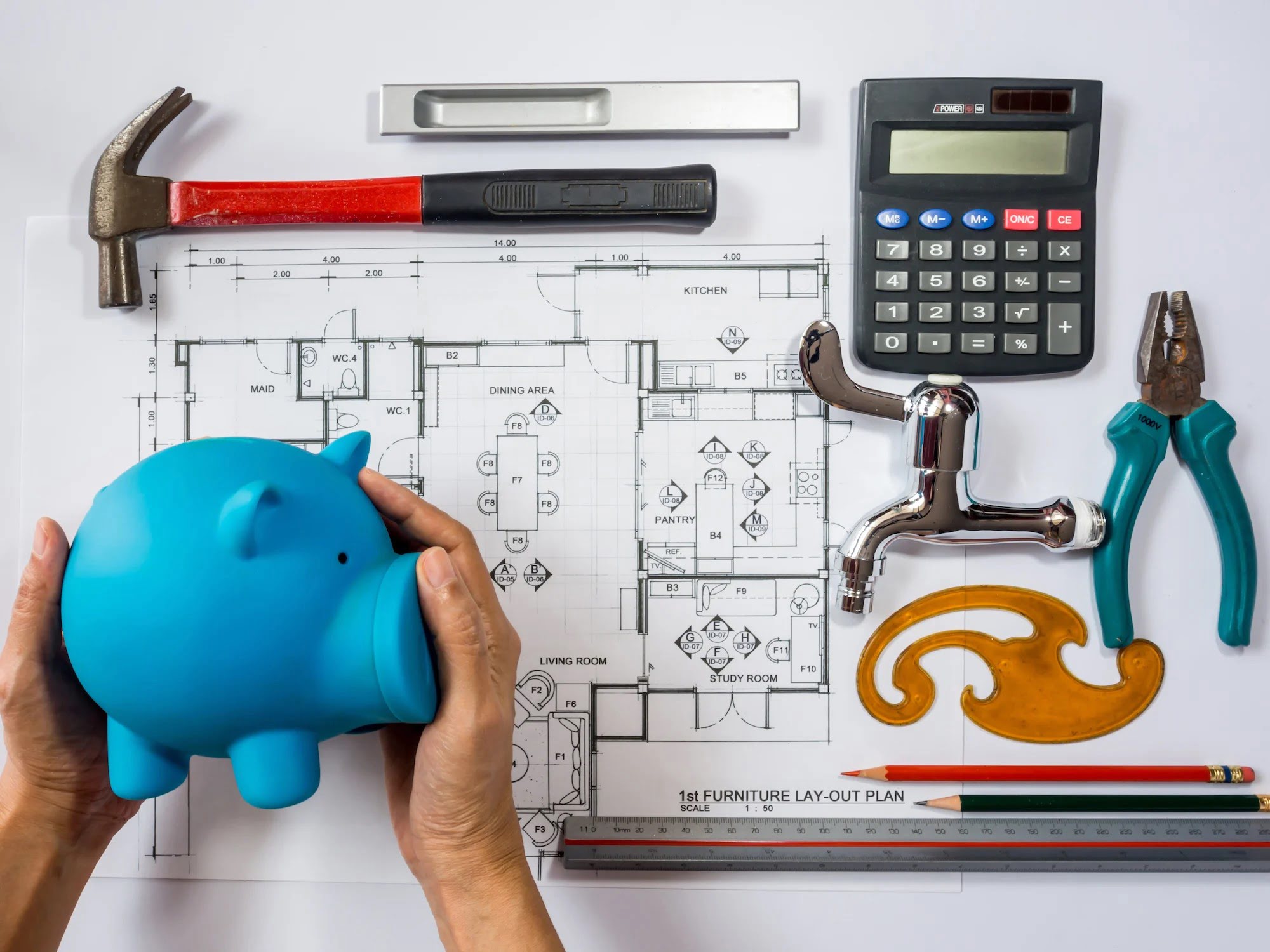

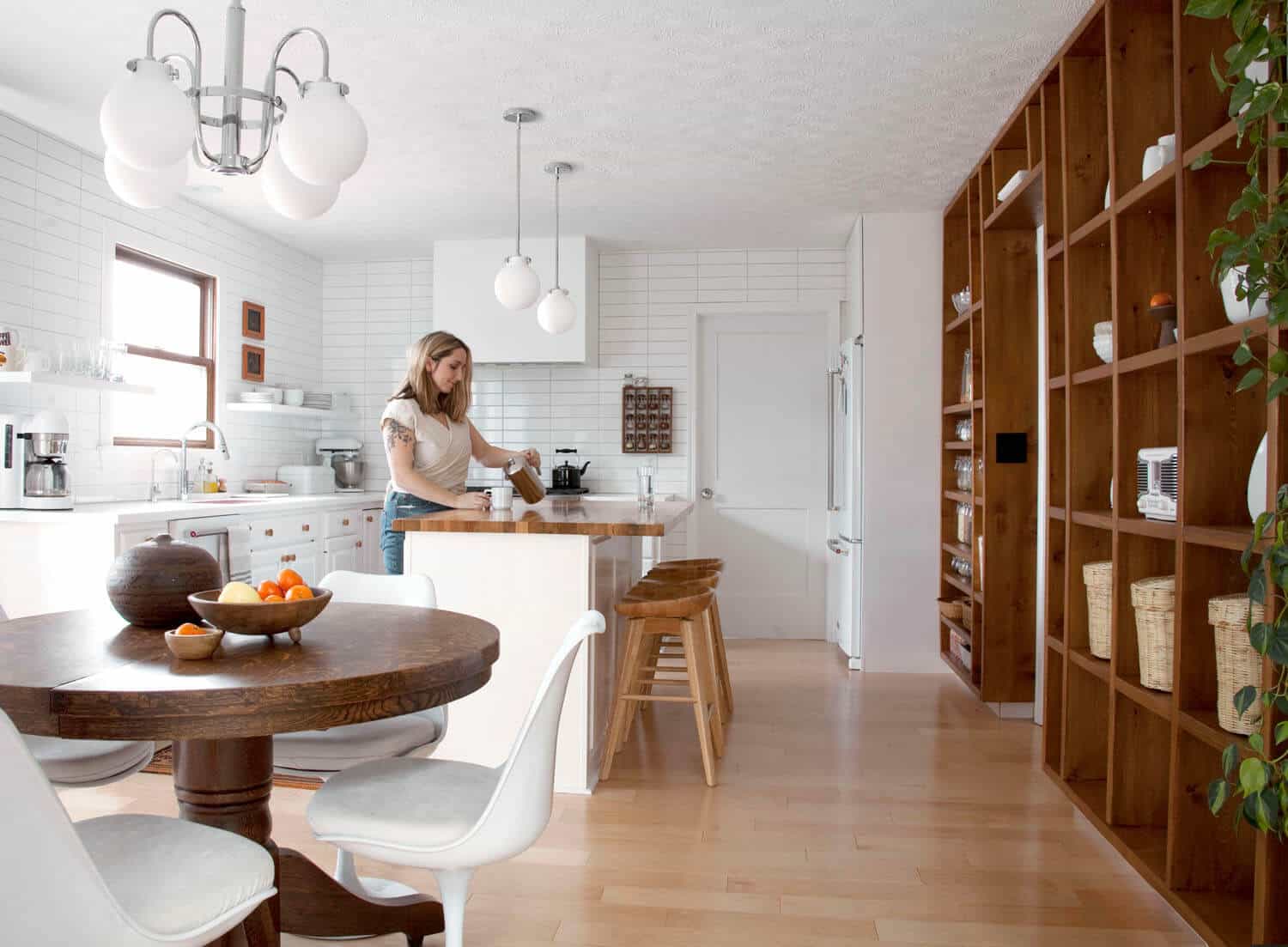
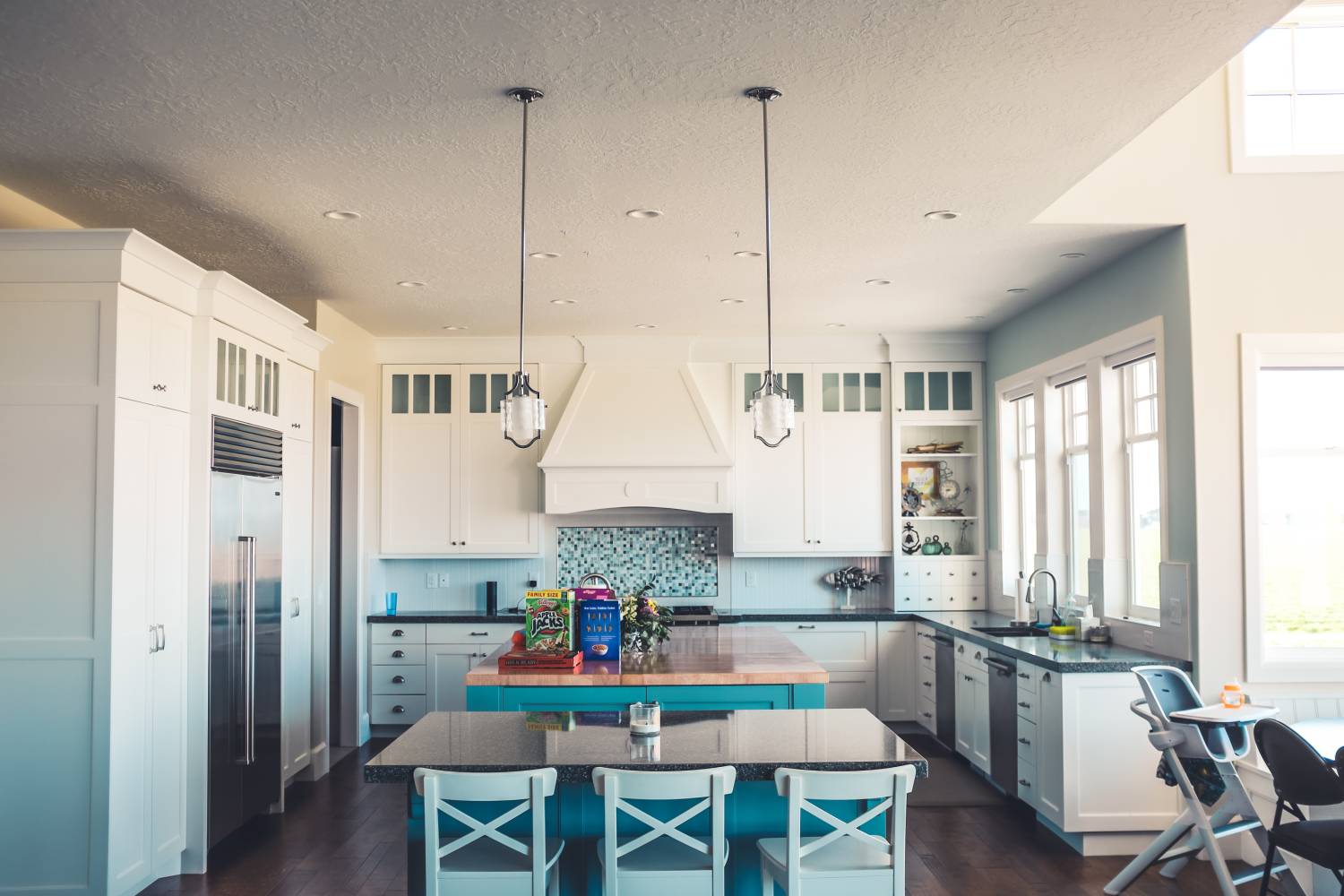

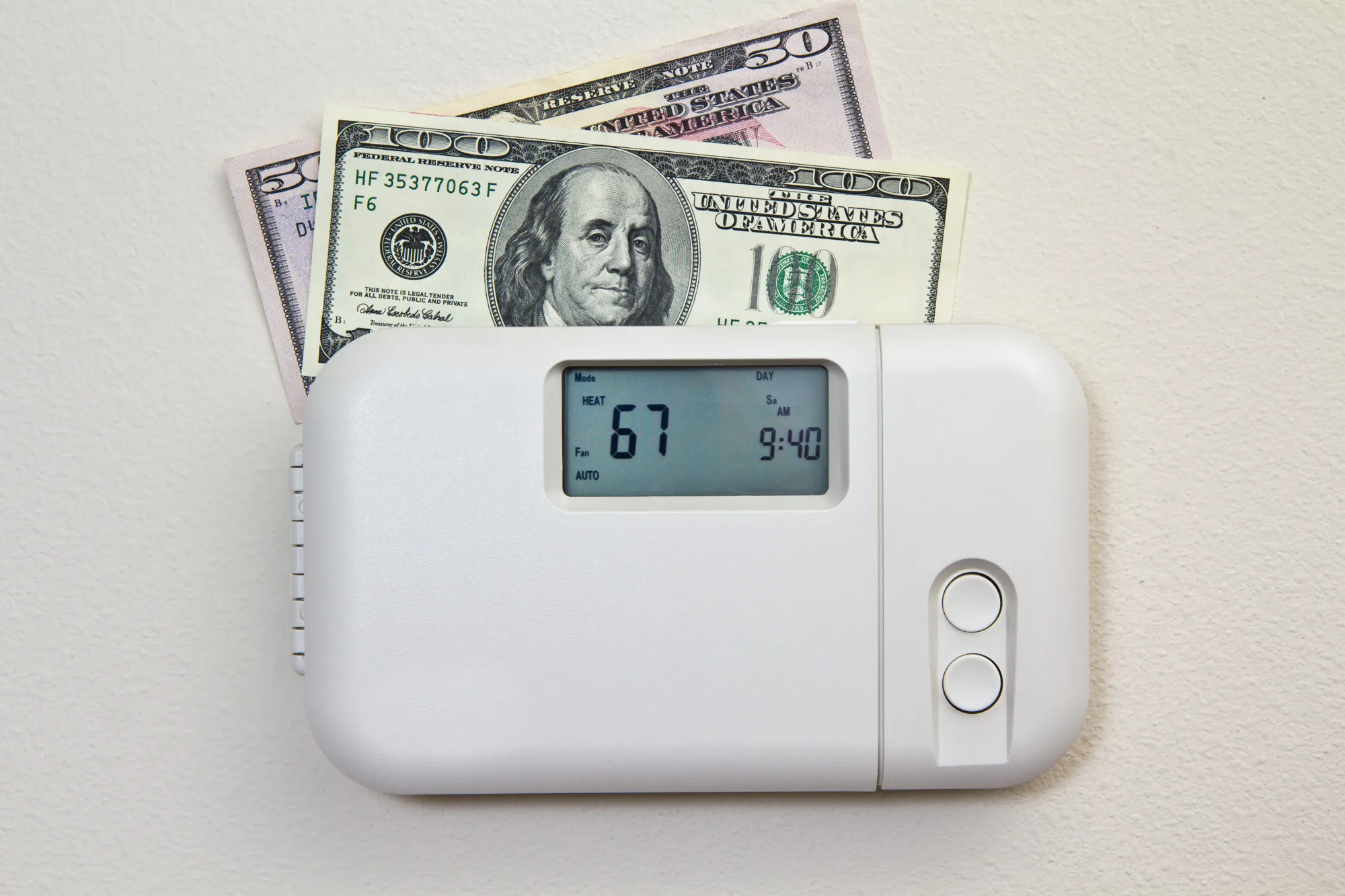
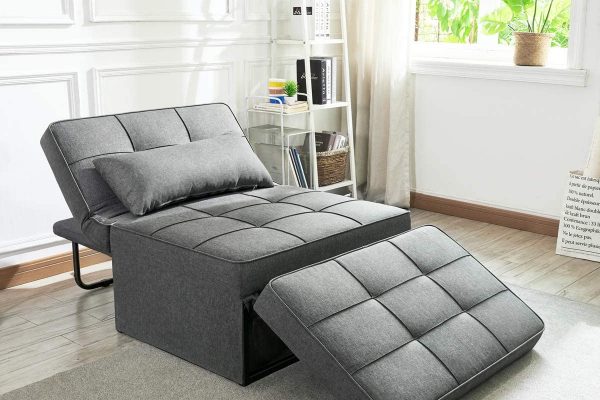
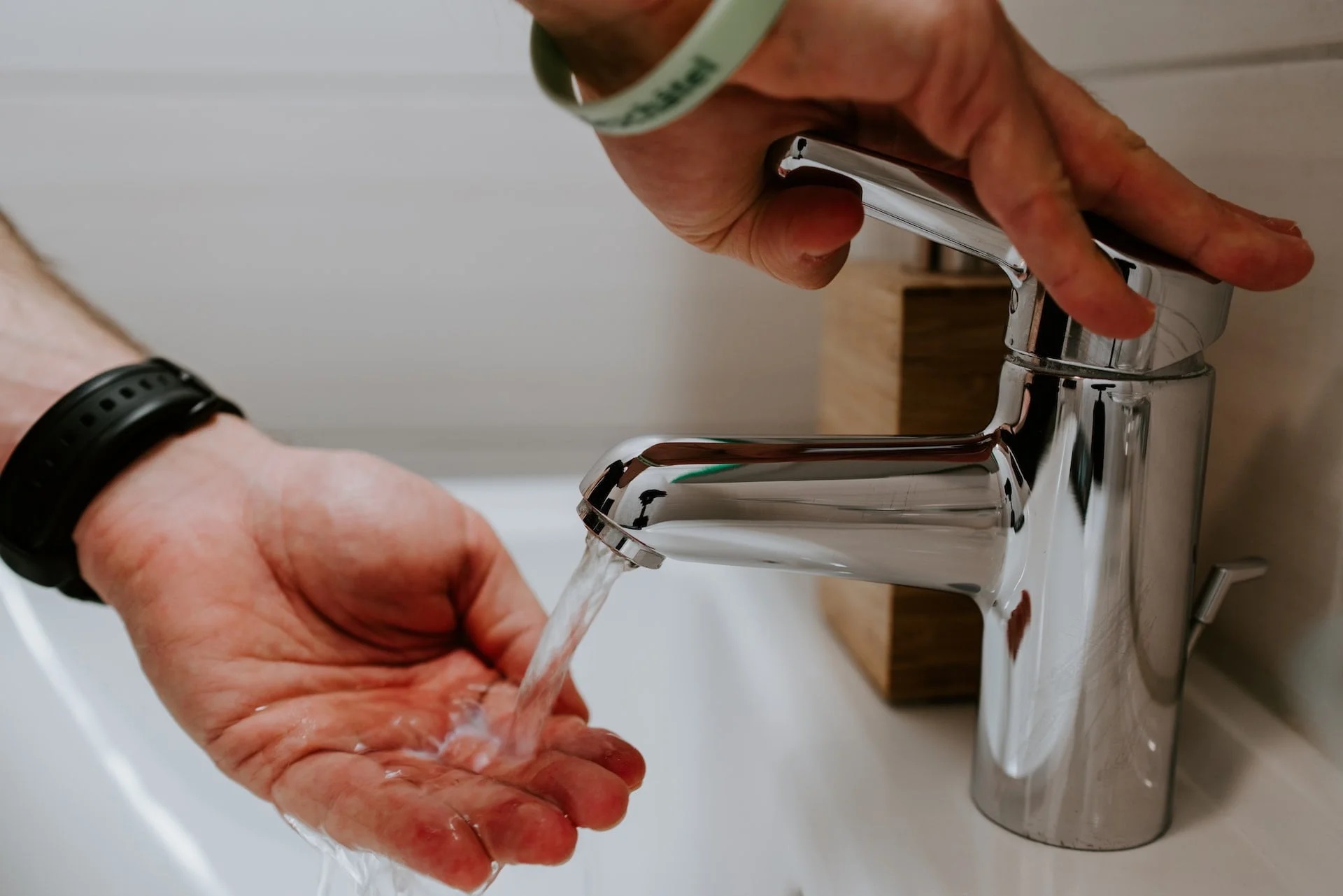
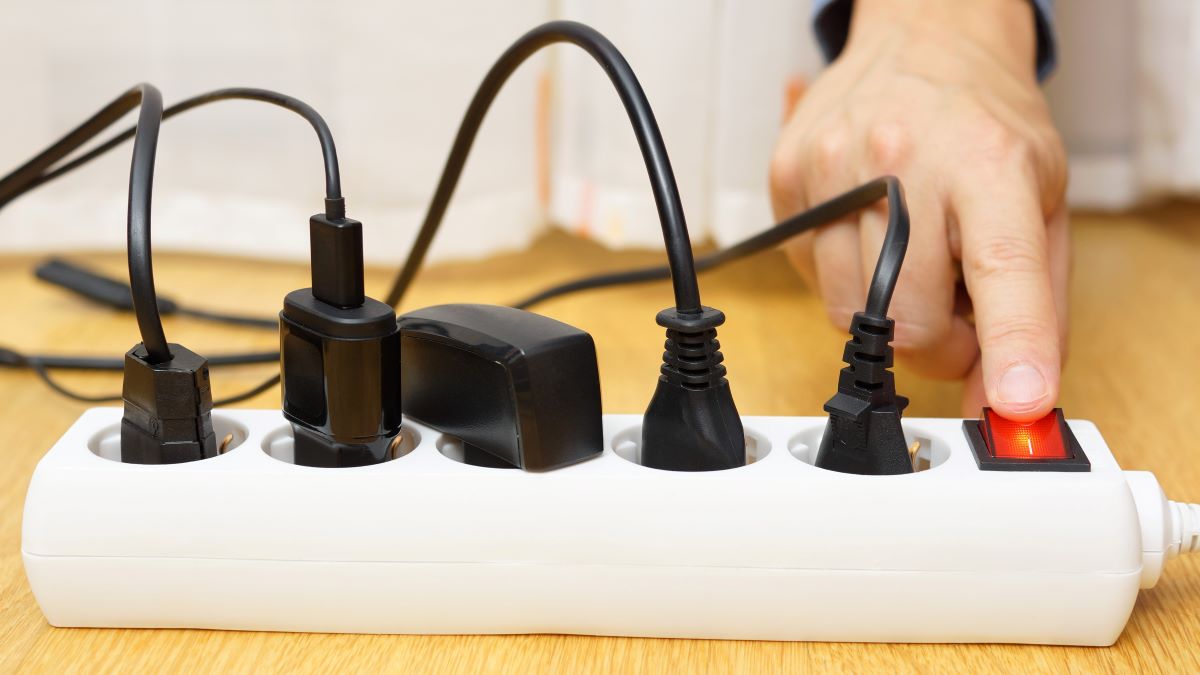
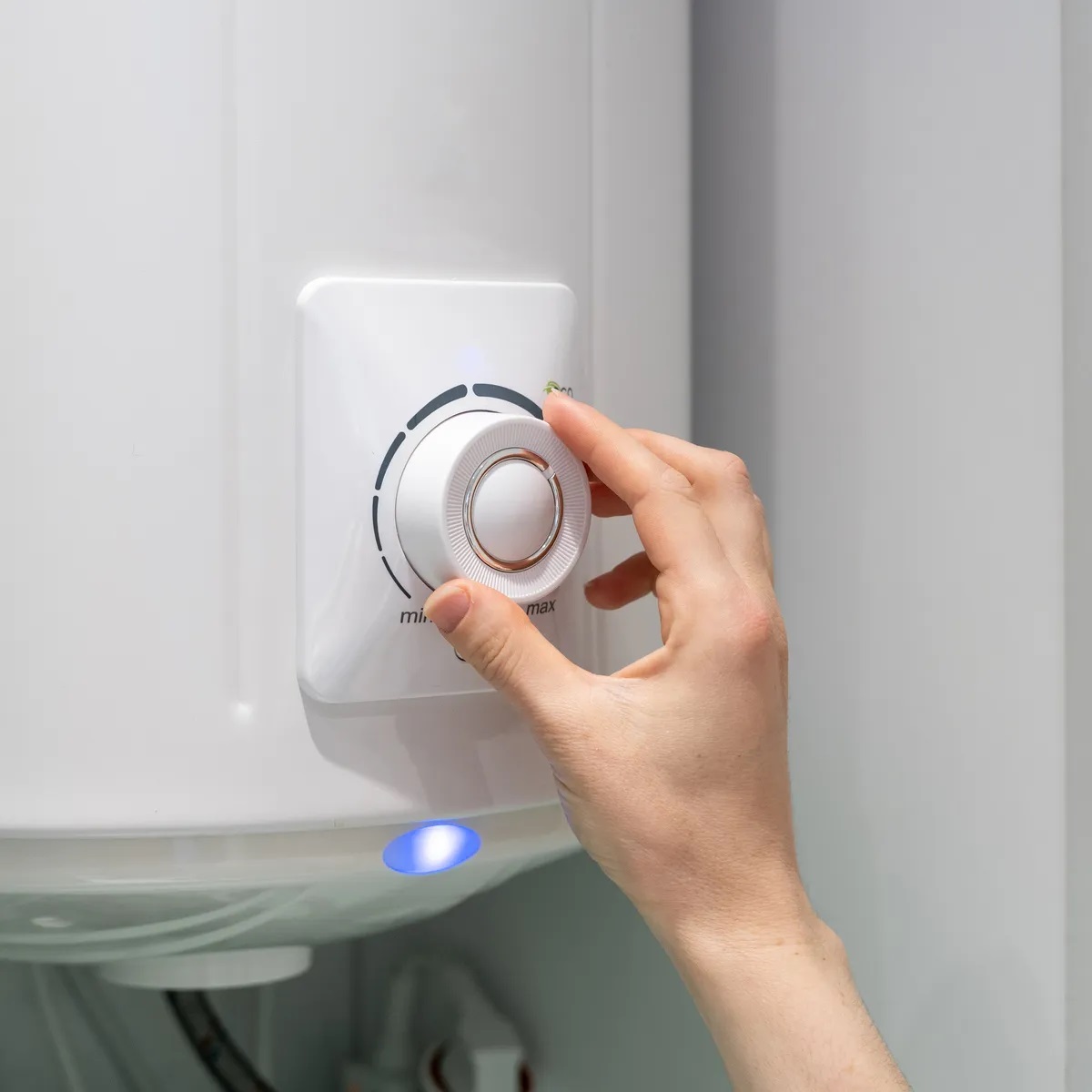
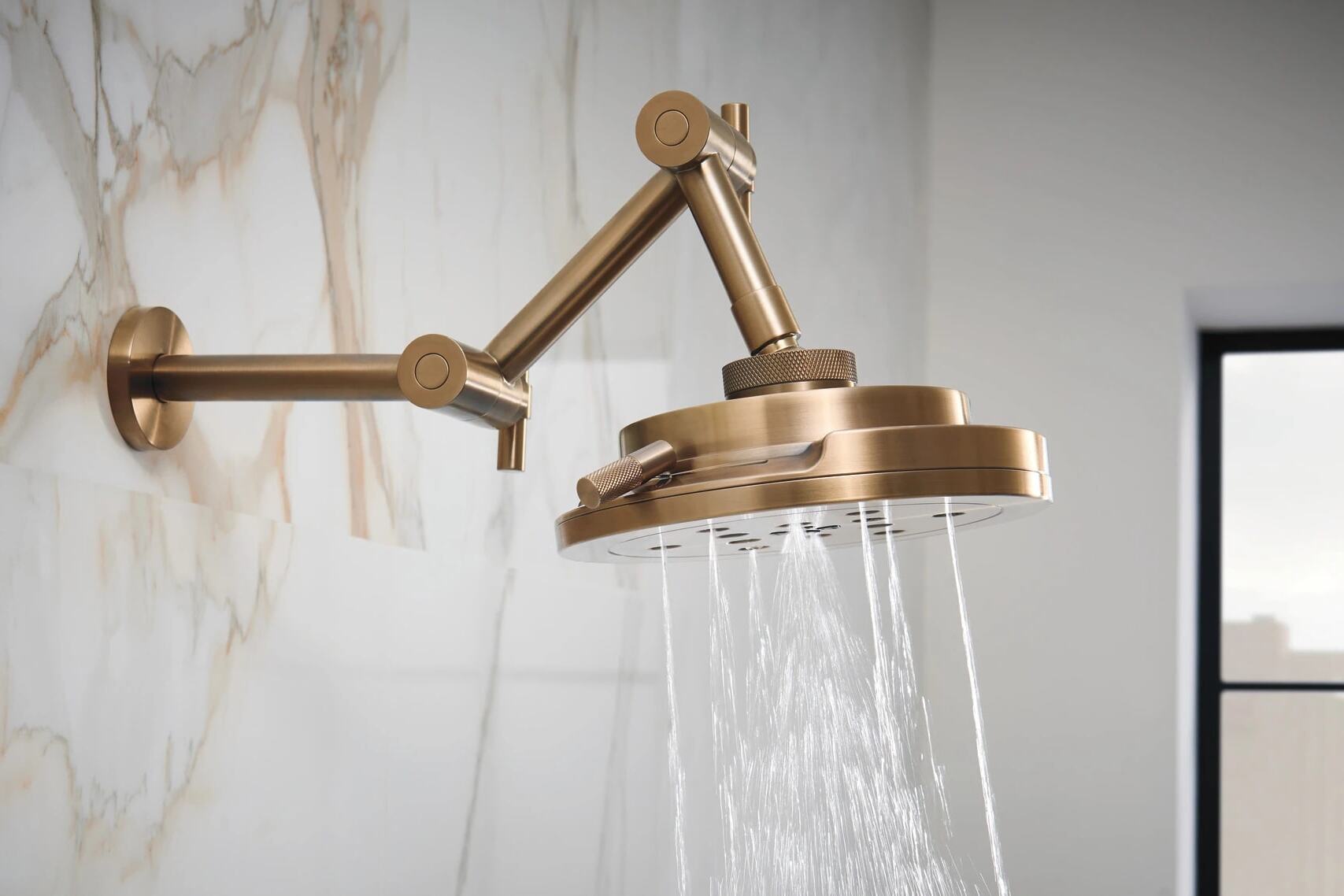
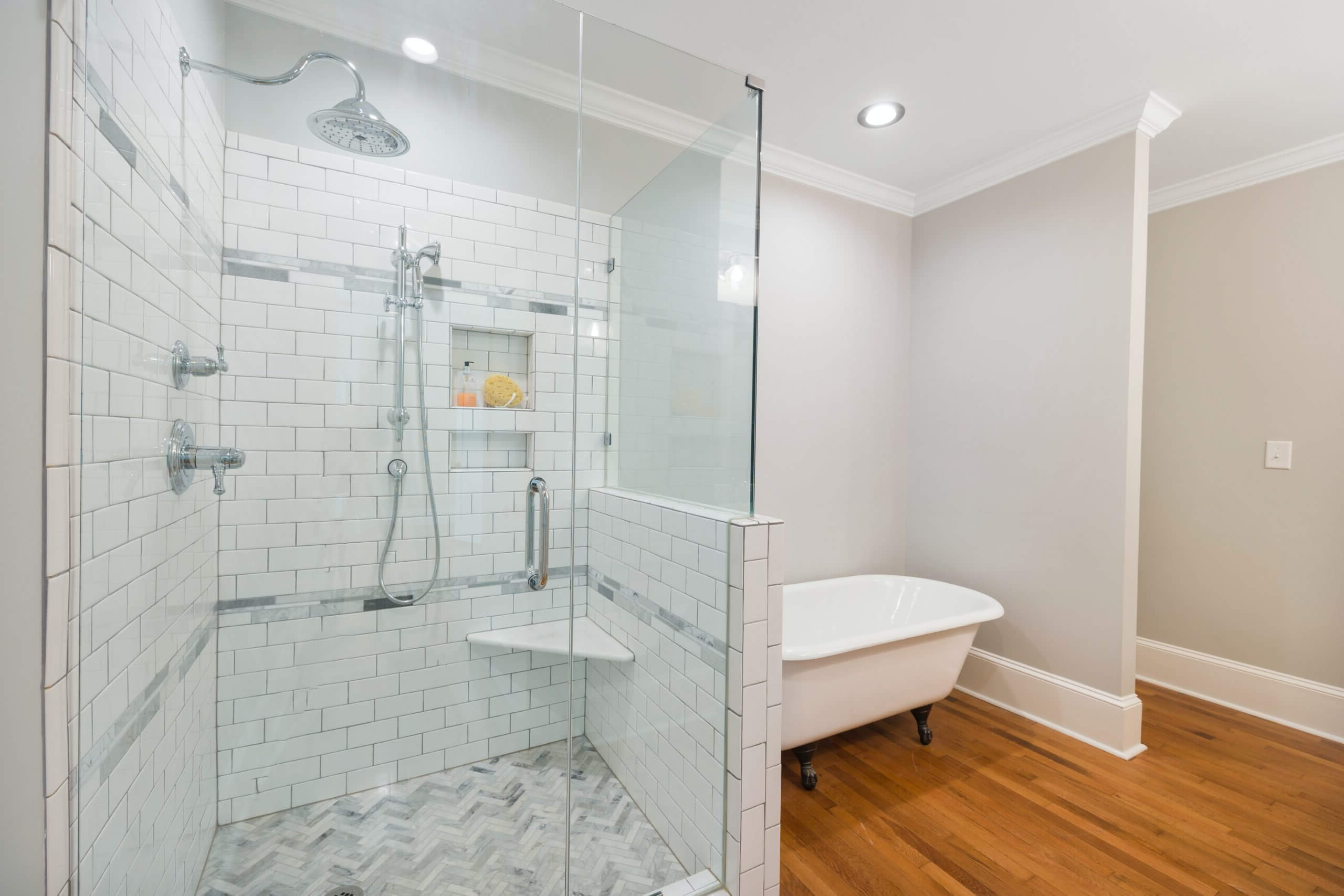

0 thoughts on “How To Save Money On A Bathroom Renovation”